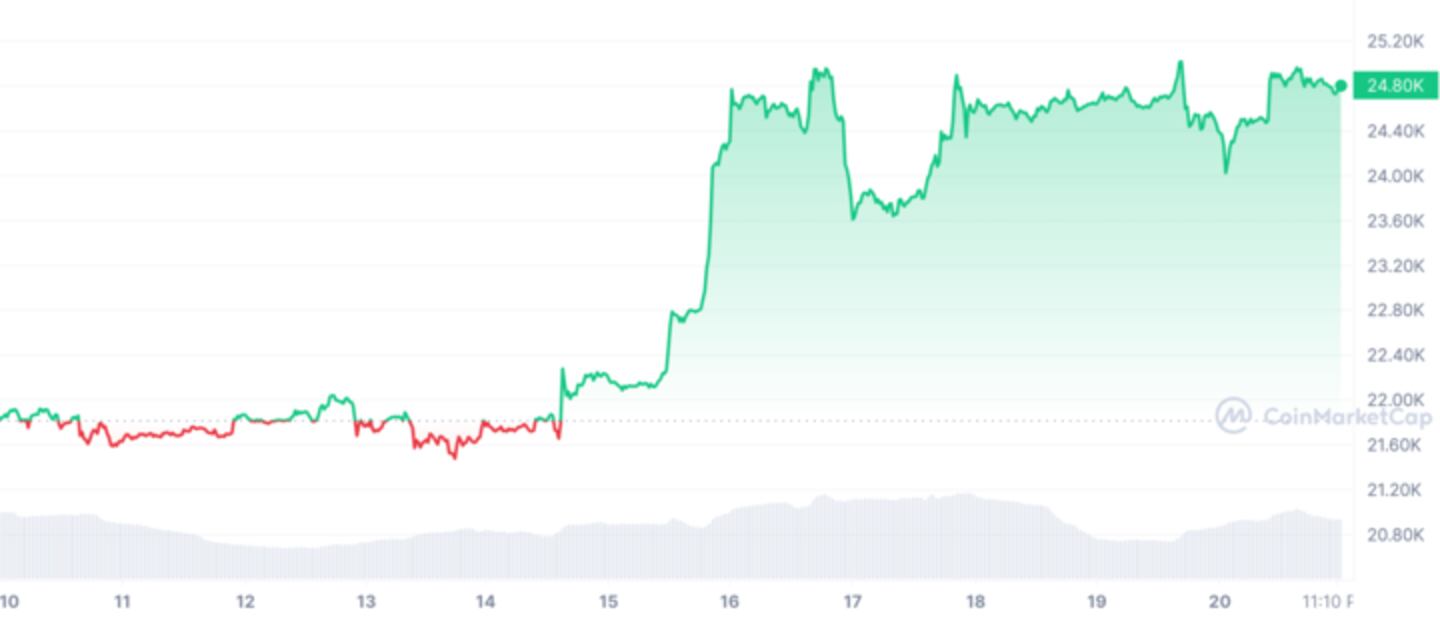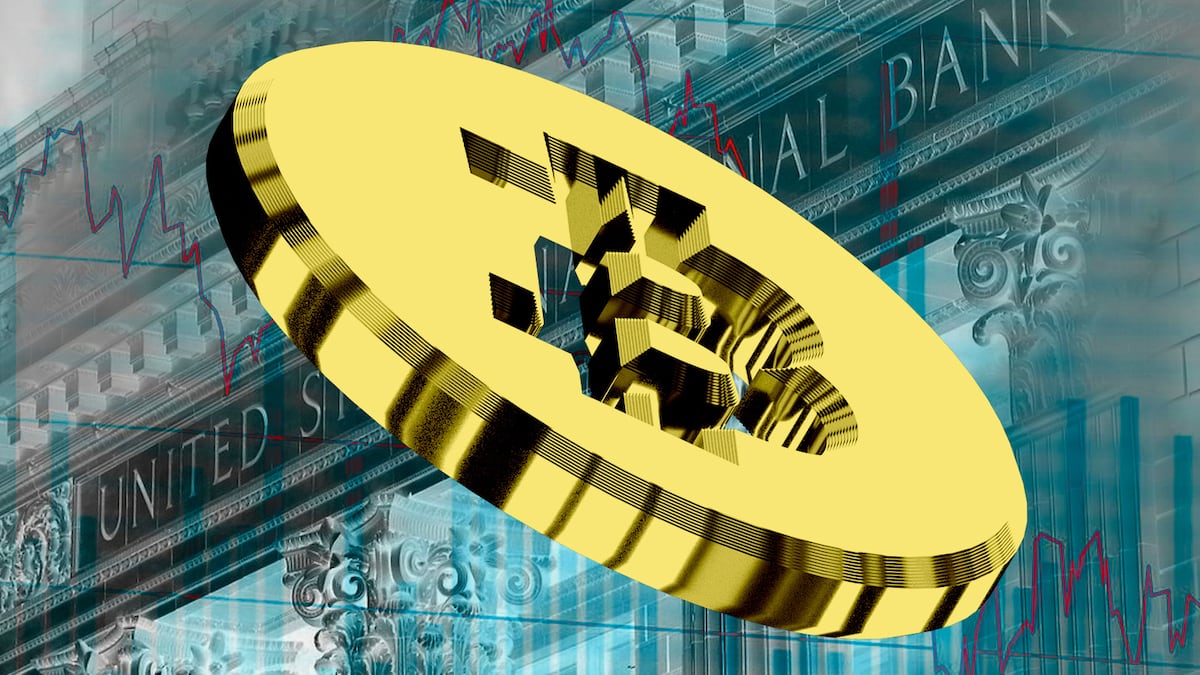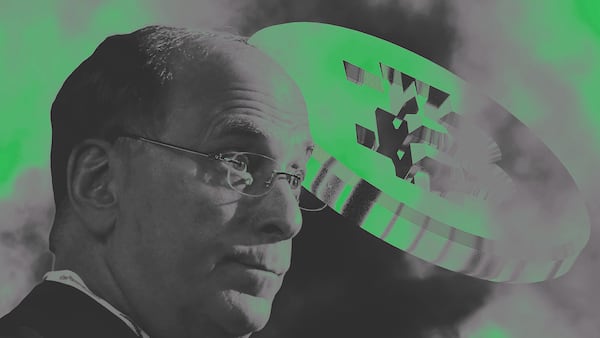Bitcoin is breaking free.
Bitcoin’s 3% rally in the last 24 hours has caught the eye of investors searching for a bright spot in a market roiled by banking chaos. Notably, the world’s most valuable cryptocurrency is decoupling from stocks.
In the last seven days, it has soared 28% even as the Standard & Poor’s 500 Index eked out a 1.5% total return, according to data from CoinGecko and Morningstar.
Bitcoin has also performed twice as well as Ether, the native token for the Ethereum smart contracts network, which usually marches in lockstep with its bigger sibling.
Over the last few years Bitcoin has closely tracked stocks, especially technology shares, as a “risk on” asset.
“Extra liquidity, that’s the difference,” between now and back when Bitcoin closely tracked higher risk assets such as the Nasdaq Composite Index, Markus Thielen, head of crypto research and strategy at Matrixport, told DL News.
“It went risk-on when the Fed provided deposit guarantees and traders realised that liquidity would be pumped into the system,” even as “some parts of the economy are in stress,” including banks, he said. “This is helping Bitcoin.”

For quarter after quarter, cryptocurrency investors have been waiting for Bitcoin to deliver on its primary mission – to provide a reliable hedge against the machinations of central banks and the traditional financial system.
Now, thanks to the banking crisis that started with the failure of Silicon Valley Bank and engulfed the Swiss banking system over the weekend with UBS’s emergency takeover of Credit Suisse, Bitcoin is finally coming through.
“Bitcoin is the crypto safe haven,” said Philippe Bekhazi, the CEO of Stablehouse, a Bermuda-based trading and custody platform.
‘The market is now pricing in that central banks will be cutting rates aggressively later this year.’
This is largely due to Bitcoin’s record as an unhacked blockchain, Bekhazi said. Even as numerous DeFi protocols have been plundered for billions of dollars in the last 12 months and “ecosystems” such as Terra have cratered, the 14-year-old digital currency has chugged along with little drama.
Still, the biggest knock on BTC has been its habit of mirroring the moves of stocks and responding to the Fed’s fight to curb inflation with rising raising interest rates.
A research study published by Georgetown University last July found that Bitcoin’s correlation with the S&P 500 jumped 58% in 2021 and the first half of 2022.
And an analysis by Fundstrat Global Advisors, a New York-based research boutique, concluded in 2022 that Bitcoin’s correlation was running close to 1 with a Nasdaq index that tracks high-growth tech stocks.
NOW READ: Bitcoin ignores macro moves, says the NY Fed. Experts disagree
This behaviour damaged Bitcoin’s credibility as a form of “digital gold” that could provide investors with a safe harbour during times of financial or geopolitical strife.
Now Bitcoin may not just be providing relief to whipsawed investors, it’s also a key indicator for what’s to come as bank authorities race to stabilise the crisis.
“The market is now pricing in that central banks will be cutting rates aggressively later this year,” Juan Correa-Ossa, associate vice president for BCA Research, a provider of global macro research, told DL News. This tends to be positive for assets with no cash flow, such as Bitcoin and gold.
Bitcoin dominance
Moreover, Bitcoin’s share of the $1.2 trillion crypto market’s capitalisation, a measure known as Bitcoin dominance, has jumped to 46% from 41% over the past 10 days while that of other major cryptocurrencies have remained flat or declined.
James Butterfill, head of research at CoinShares, a European investment and trading group, said customers are increasingly seeing Bitcoin as a safe haven asset.
“Given that the futures market has significantly shifted from anticipating a 50 to 75 basis point rate hike this year to potentially expecting 100 basis points of rate cuts (attributable to the banking crisis), this change has also been highly supportive of Bitcoin prices,” he told DL News.
Another force to reckon with is counterparty risk. Correa-Ossa said that investors may be hedging against the risks of trading partners, or counterparties, which may be struggling to stay solvent. He cautioned that this applies to self-custodied Bitcoin.
“It’s worth remembering that Bitcoin was invented during the Great Financial Crisis bailouts,” Correa-Ossa said.




